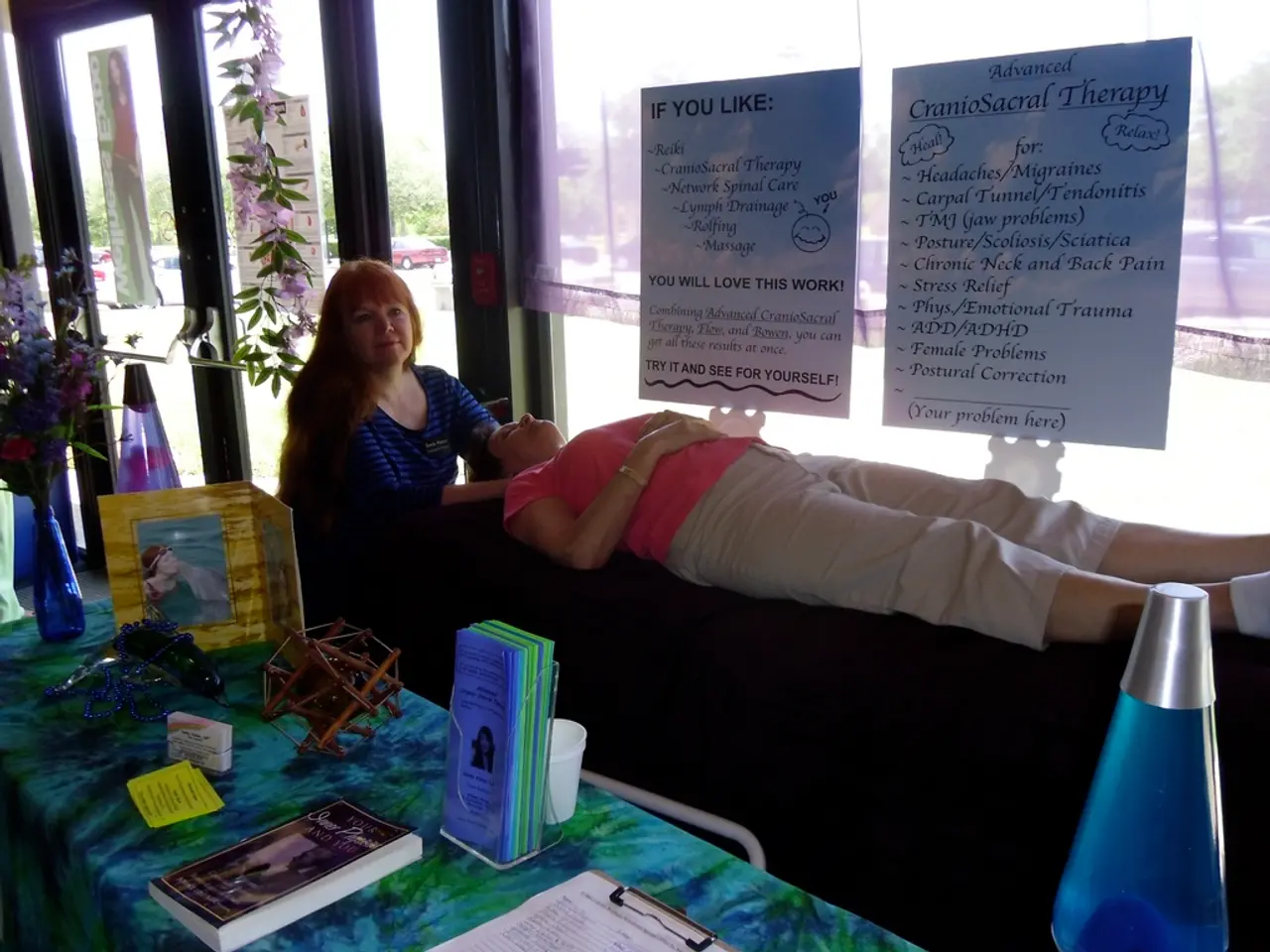Back ache in the lower region: Persistence, remedy, and healing process
Chronic Lower Back Pain: Understanding Its Duration and When to Seek Medical Help
Lower back pain can be a common and frustrating issue for many individuals. While acute pain usually resolves within a few days to six weeks, chronic pain can persist for more than three months.
Duration of Lower Back Pain
Acute lower back pain typically lasts for a few days to six weeks, while subacute back pain may last between four and twelve weeks. Chronic back pain, on the other hand, lasts for more than twelve weeks.
Seeking Medical Attention
If you are experiencing chronic, worsening, or severe lower back pain, it is essential to seek medical attention. Additionally, if you notice any associated symptoms such as numbness, weakness, loss of movement, or changes in bowel or bladder function, consult a healthcare professional immediately.
In such cases, a healthcare specialist can evaluate the cause by physical examination and diagnostic imaging to determine appropriate treatment. Prompt medical evaluation is particularly important if "red flag" symptoms like neurological deficits or bowel/bladder issues occur, as they may indicate serious underlying conditions requiring immediate attention.
Causes and Treatment
Possible causes of acute lower back pain include sprains and strains, traumatic injury, fractures, sciatica, herniated disk, osteoarthritis, scoliosis, and spinal stenosis. Treatment for lower back pain typically depends on the cause, but may include physical therapy, self-care, lifestyle changes, medications, and in some cases, surgery.
Prevention and Management
Mental health issues and stress can lead to muscle tension, potentially causing back pain. Walking is a low-impact exercise that may help relieve lower back pain and improve mobility. On the other hand, overloading a backpack, particularly in children, may cause straining or muscle fatigue. Extended bed rest may worsen back pain and weaken the core muscles that support the back; instead, it is recommended to limit activities that cause pain and gradually increase physical activity.
Smoking can restrict blood vessels, leading to increased degeneration in the spine and potential back pain. In around 90% of cases, lower back pain is temporary and can be treated with self-care, medications, and therapeutic treatments.
In summary, understanding the duration of lower back pain and knowing when to seek medical help can aid in managing and treating this common issue. If you are experiencing chronic, worsening, or severe lower back pain, it is crucial to consult a healthcare professional for a proper evaluation and treatment plan.
- Chronic lower back pain, which lasts for more than twelve weeks, can persist for months and may require pain management through methods such as physical therapy, medication, and in some instances, surgery.
- Achieving overall health and wellness, including mental health, fitness, and exercise, plays a crucial role in preventing and managing chronic lower back pain, as stress can lead to muscle tension and potential back pain.
- Nutrition does not directly cause chronic lower back pain, but proper diet can help alleviate accompanying symptoms and promote overall well-being, while extended bed rest may worsen back pain and weaken the supporting core muscles.
- Lower back pain can be a sign of serious underlying medical conditions, such as chronic diseases like osteoarthritis or herniated disk, making it essential to seek immediate medical attention if associated symptoms like numbness, weakness, loss of movement, or changes in bowel or bladder function occur.
- Science and medical advances in pain management and understanding numerous medical conditions—including chronic diseases, fitness and exercise, and mental health—contribute to identifying the causes of lower back pain and developing effective treatment plans for patients affected by this common issue.




